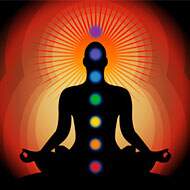What is Karuna Reiki?
Karuna reiki, acknowledged as a Western form of reiki, is formulated from the reiki therapy devised in 1920s by the Mikao Usui, a Japanese Buddhist.
Karuna reiki was established by William Rand, creator of the International Center for Reiki Training in Michigan, United States.
Karuna Reiki is based on a unique connection between all human beings, and it defines karuna or compassion as a natural chain reaction.
What does ‘Karuna’ mean?
‘Karuna’ is a Sanskrit word that means ‘compassion’. ‘Karuna’ is a commonly used word in Hindi and demonstrates any act of compassion and benevolence that abates the pain and the misery suffered by others.
According to International Center for Reiki Training, karuna motivates and sensitizes an individual towards the distress and agony of the fellow human beings. The initiation of karuna inside the inner soul enables an individual to develop empathy towards his/her surroundings, and the person himself becomes responsive to the karuna or empathy, reflected by all the enlightened people.
Symbols
Karuna reiki is accomplished with two stages and two attunements, with the use of four master symbols and eight treatment symbols.
The four symbols used in the level one of karuna reiki have specific descriptions and healing effects.
- The first symbol deals with the past life and helps in the emancipation of deep-rooted problems and karma. The symbol works on the cellular level and initiates the person into deep healing.
- The second symbol disintegrates the negative thoughts and designs that are being used subconsciously by an individual to safeguard him/her from reality. The symbol destroys misconceptions, misbelief, and heals the inner self.
- The third symbol implants love, healing and maintains balance.
- The fourth symbol concludes the therapy and brings the person back into his body.
The other symbols of karuna reiki are powerful and produce abundant vibration. The symbols perform on a deeper level and connect with the higher inner self.
Karuna Reiki Practice
Karuna reiki proposes that each individual connects with each other and has the capacity to channel and accept the healing energy from others. However, not every individual can access this power within himself without cultivating karuna inside. The therapy is designed to establish karuna inside a human being by transformation of spiritual and emotional levels. Karuna reiki makes a person favourable to the healing ability of karuna and helps him/her cultivate the power of projection of karuna onto other human beings.
Reiki is a simple learning procedure with several benefits. However, the choice of a well informed and experienced reiki master is an important factor. A proper set of guidelines involving the lineage and the qualifications, should be thoroughly checked before selecting the practitioner.
 Find Pose
Find Pose

